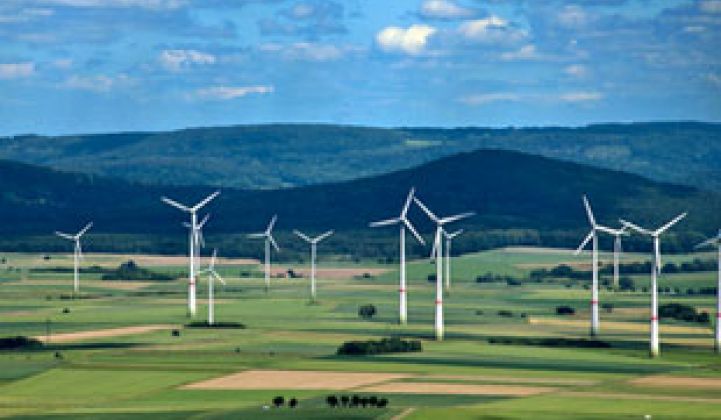When the wind blows and the sun shines in Germany, electricity prices around the country plummet. Natural gas peaker plants are not needed, as the peaks are erased and they cannot compete with renewables.
But the grid still needs a whole lot of balancing resources during times that renewables dominate. That makes demand response, still a very nascent resource in Germany, even more important.
When it comes to demand response, America has the most mature markets in the world. Within the U.S., demand response -- both for emergency load capacity and ancillary services -- is growing in every region.
The most active and largest market is PJM Interconnection, which also happens to be one of world’s largest grid transmission organizations. Germany has roughly half the peak load of PJM, but the volume of reserves procured by the four German transmission system operators are comparable to the size of the ancillary market in PJM, according to an analysis by EnerNOC.
EnerNOC bought its way into the German market earlier this year with the acquisition of Entelios, one of the European demand response leaders. EnerNOC already claims a large presence in Australia, a relatively mature DR market, and is moving aggressively into Ireland and the U.K. as well. But it is Germany that has the most immediate potential.
“In the next two years, Germany is our biggest opportunity in Europe,” said David Brewster, president and co-founder of EnerNOC. “But we’re very bullish about the opportunity for demand response in Europe as a whole.”
In 2010, very little of EnerNOC’s revenues came from outside the U.S. By 2013, about 20 percent of revenues came from abroad. While the U.S. market and the Australian market grew out of the need to shave off kilowatts when electricity demand is high, the German market is all about balancing services.
There are three levels of ancillary services in Germany, Brewster explained: primary, secondary and tertiary.
Primary is closest to the practice of frequency regulation in the U.S., which requires dispatch times of just a few seconds. EnerNOC is mostly working in the other two markets: secondary, which is similar to operating reserves and requires a five-minute response time, and tertiary, which requires a fifteen-minute response time.
The secondary and tertiary markets each need about 2,500 megawatts in each direction of positive and negative demand response, said Brewster. Germany is unique in that it needs demand response providers to drop load (positive DR) to balance the grid, as well as to increase their load when there is more renewable power than the grid can handle. In total, there are about 10 gigawatts of load needed.
The market potential is there, but it’s early days. “It’s a major evolution just [to allow] demand response to participate in all of these services,” said Brewster. Currently, demand response is participating in the markets as part of “innovation projects,” but it has not been codified in the market by the energy industry laws.
“With the newly elected German government only now becoming really active,” Brewster said, “we are working to have demand response formally included in the legislation.”
There are other barriers, as well. Commercial and industrial customers must secure permission from the electric supplier to participate in demand response, because the suppliers are responsible for balancing their supply and demand within their portfolio. Other European markets, such as Belgium, have made modifications to make DR participation easier. But it has not happened yet in Germany.
Another problem, Brewster explained, is that customers providing negative DR could exceed their contracted demand levels, triggering grid usage fees that are similar to demand charges that businesses face in many parts of the U.S. Aggregators like EnerNOC would like to see customers exempted from those fees while they’re providing grid balancing services.
Lastly, demand response will compete with natural gas power plants in the ancillary services market -- potentially eroding their profit margins even further. That may cause some resistance to increasing demand response.
Despite the challenges, EnerNOC is bullish about the market opportunity. “We view Germany as a linchpin of our European strategy,” said Brewster. “We have a great opportunity to export technology and business model around the rest of the world.”



